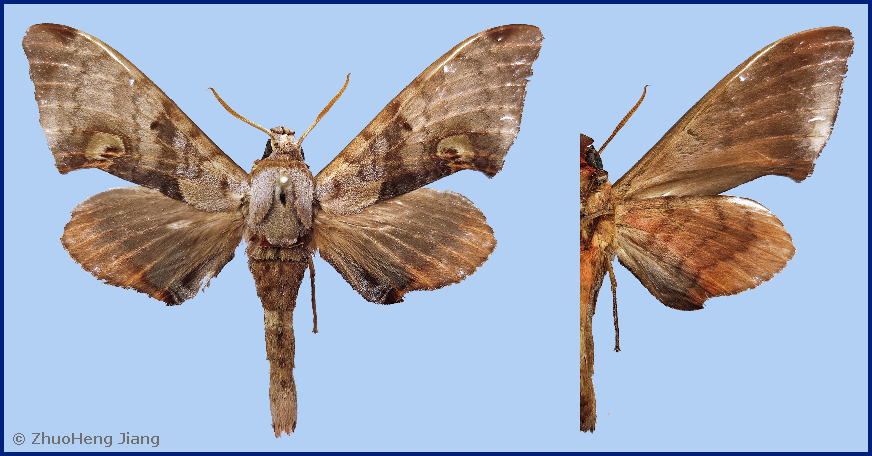
Daphnusa sinocontinentalis Brechlin, 2009, Entomo-Satsphingia 12(2): 12. Type locality: Thailand, Chiang Mai Province, Doi Inthanon National Park, km 37-38, road N of Chom-Thong summit, near (around) checkpoint 2, 1730 m.
Note. Using DNA barcodes, small differences in male genitalia and small variations in wing markings, the taxon originally regarded as Daphnusa ocellaris Walker, 1856, has been split/elevated into seven species (Brechlin, 2009; Haxaire & Melichar, 2009; Melichar & Řezáč, 2014). These are Daphnusa ailanti (Boisduval, 1875), Daphnusa fruhstorferi (Huwe, 1895), Daphnusa haxairei Melichar & Řezáč, 2014, Daphnusa ocellaris Walker, 1856, Daphnusa philippinensis Brechlin, 2009, Daphnusa sinocontinentalis Brechlin, 2009, and Daphnusa zythum Haxaire & Melichar, 2009.
Wingspan: 80--112mm. This species is like a small Marumba, but with a pale patch at the place of the tornal loop on the forewing upperside forming a rather poorly defined ocellus. The male pale reddish-brown or dark olive-brown; collar and vertex of thorax darker. Thus very similar to Daphnusa ocellaris.
In the male genitalia, the primary difference between species lies in the morphology of the juxta (Brechlin, 2009). In Daphnusa sinocontinentalis it is finger-shaped, in Daphnusa ocellaris it is pear-shaped, whereas in Daphnusa haxairei it is an elongate V-shape (Melichar & Řezáč, 2014).
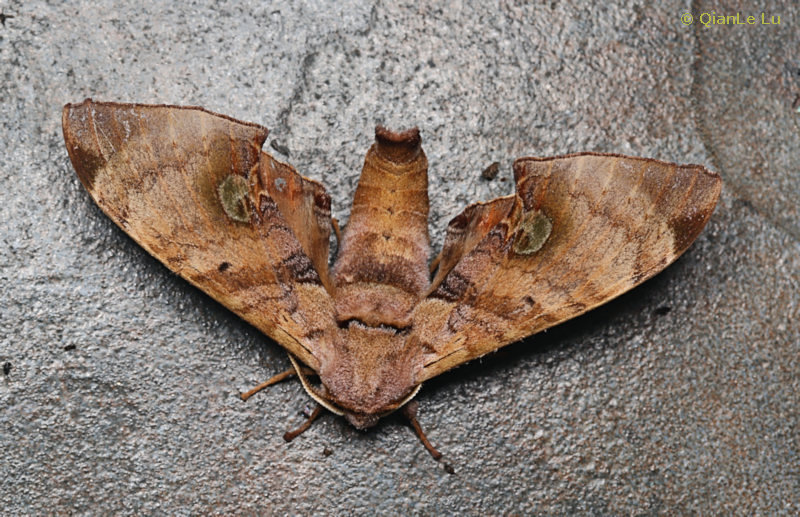
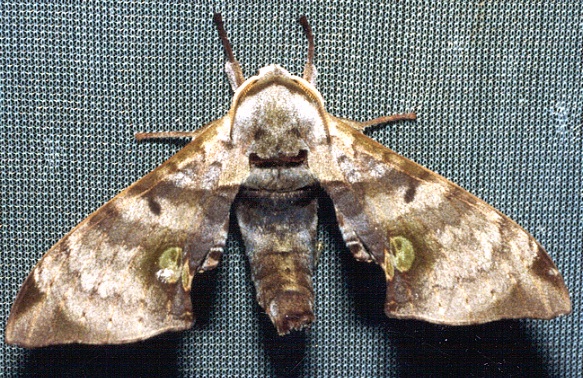
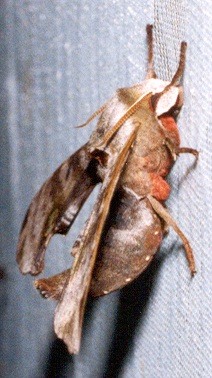
Unknown.
China: v (Guizhou); 4.v (Wuzhishan, Hainan); 11.v (Fangchenggang City, Guangxi); 18.v (Xishuangbanna, Yunnan); x (Tianhu, Hainan).
OVUM: Unknown.
LARVA: In Daphnusa ocellaris, head large, rounded, thorax and anal segments strongly tuberculate. Horn long, straight, densely tuberculate. Basic body colour green, with a dorso- and a ventro-lateral series of purplish-brown spots. Segment 8 almost entirely purple-brown, this belt produced backwards dorsally, forming a large patch on segment 9; there is a large divided dorsal patch on segment 14 (Rothschild & Jordan, 1903).
In Daphnusa ocellaris, feeds high in the crown of trees.
PUPA: Unknown.
Larval hostplants. Nephelium (Sapindaceae) and Durio (Bombaceae) (Inoue, Kennett & Kitching, [1996] 1997).
Daphnusa ocellaris is a minor pest of durians (Durio spp.) in Malaysia (Ramasamy, 1980).
Unknown.
China: ?Shaanxi (Foping National Nature Reserve, Qinling, 1800m); Yunnan (Mengla, 900m; Menglun, Xishuangbanna, 715m); Guizhou (Sheng, 1000m); Guangxi (Naliang Town, Fangchenggang City, 102m); Hainan (Wuzhishan, 620m; Jianfengling; Tianhu).
The Shaanxi individual is so out of place that the presence of this species in this province requires confirmation.
Burma/Myanmar (Palaw), Thailand (Chiang Mai; Churt Hubani; Kanchanaburi), southern China, Laos, Vietnam and Kampuchea/Cambodia.
Based mainly on DNA barcodes, the tentative ranges of the members of this genus are: Daphnusa ailanti - Indonesia (Sulawesi); Daphnusa fruhstorferi - Indonesia (Sumatra; Java; Bali); Daphnusa haxairei - India (Arunachal Pradesh), Nepal; Daphnusa ocellaris - Malaysia (Peninsular; Sarawak; Sabah), Indonesia (Kalimantan), Philippines (Palawan), ?Taiwan (Taipei City), Burma/Myanmar (Tenasserim); Daphnusa philippinensis - Philippines (Luzon; Leyte; Panay Island); Daphnusa sinocontinentalis - China (?Shaanxi; Yunnan; Guizhou; Guangxi; Hainan), Burma/Myanmar (Palaw), Thailand (Chiang Mai; Churt Hubani; Kanchanaburi), Laos (51 km N of Sekong), Vietnam, Cambodia/Kampuchea; Daphnusa zythum - Indonesia (Siberut).
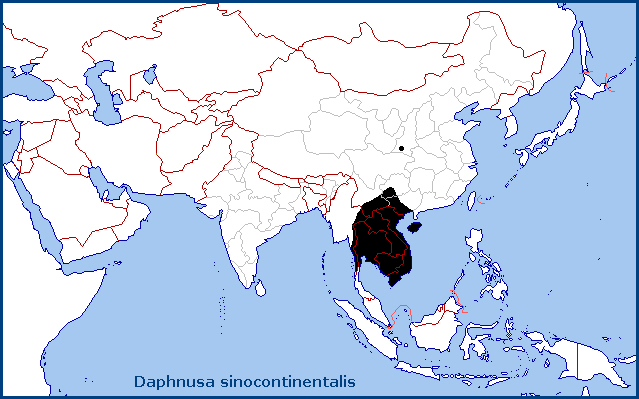
 Return to Sphingidae of the Eastern Palaearctic species list
Return to Sphingidae of the Eastern Palaearctic species list